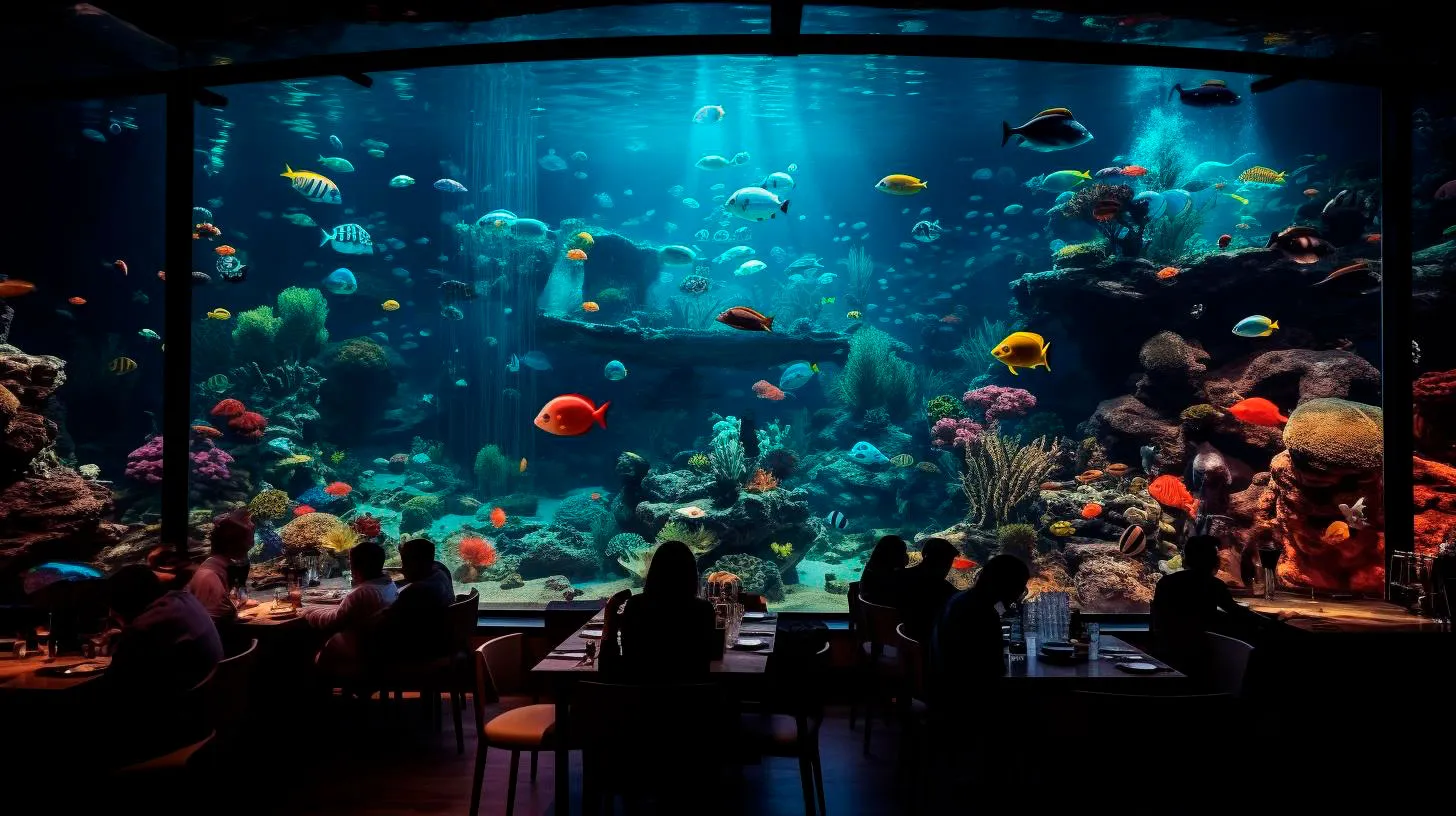Preserving Authenticity: Traditional Japanese Sushi vs Modern American Adaptations
In this article, we will explore the key differences between traditional Japanese sushi and modern American adaptations, highlighting the importance of preserving authenticity while catering to diverse tastes.
Traditional Japanese Sushi: A Culinary Art Form
Japanese sushi has a rich history dating back to the 8th century. It embodies the art of simplicity, balance, and respect for the natural flavors of each ingredient. Here are some key features and advantages of traditional Japanese sushi:
- Quality Ingredients: Traditional sushi emphasizes the use of fresh, seasonal, and high-quality ingredients. Raw fish, known as sashimi, is carefully selected by skilled chefs, ensuring optimal taste and texture.
- Flavor Harmony: Traditional sushi focuses on delicate flavor combinations. The sushi rice, seasoned with vinegar, serves as the foundation of the dish, perfectly complementing the toppings. The balance between the rice and toppings is crucial to achieving an exquisite taste.
- Technique and Skill: Preparing traditional sushi requires years of training and expertise. Sushi chefs, or itamae, undergo rigorous apprenticeships to master the art of cutting fish, forming rice, and creating visually pleasing presentations. This meticulous craftsmanship is truly awe-inspiring.
- Presentation: Traditional sushi is a work of art. The attention to detail in presentation showcases the chef’s skills and enhances the dining experience. Each sushi piece is carefully crafted, ensuring it is visually appealing.
Modern American Adaptations: A Fusion of Flavors
The introduction of sushi to American culture has led to innovative interpretations, blending traditional Japanese techniques with local ingredients and flavors. While some argue that these adaptations may dilute the authenticity, there are unique advantages to this fusion:
- Creativity: American adaptations have given rise to a plethora of creative sushi rolls, incorporating unconventional ingredients, sauces, and textures. These innovative combinations have broadened the flavor palette, appealing to a wider range of palates.
- Accessibility: Modern American sushi has made this Japanese delicacy accessible to a larger audience. It has allowed individuals with dietary restrictions, such as vegetarians or those who prefer cooked fish, to enjoy sushi options tailored to their preferences.
- Localization: American sushi adaptations often incorporate local ingredients and flavors, promoting sustainability and supporting local food industries. This allows for a culinary exchange that celebrates diversity while ensuring fresh and readily available ingredients.
- Fun Dining Experience: American sushi has also introduced an entertaining element with interactive sushi bars and dynamic presentation styles. The theatrical aspect of sushi preparation has become a form of culinary entertainment, attracting customers with its engaging experience.
The Key Takeaways: Balancing Authenticity and Adaptations
While it’s important to appreciate and explore the adaptations of traditional Japanese sushi, preserving its authenticity should be paramount. Here are the key takeaways to consider:
- Cultural Respect: It is vital to honor and appreciate the cultural origins of traditional Japanese sushi. Recognizing and highlighting its rich history and techniques allows for a deeper appreciation of the dish.
- Quality Ingredients: Regardless of adaptation, using high-quality and fresh ingredients is crucial. This ensures that the flavors are true to the essence of sushi, no matter the cultural variations.
- Balance and Harmony: The fundamental principles of flavor balance and aesthetic presentation should be upheld in all sushi variations. Striving for harmony between rice and toppings is essential to create a memorable culinary experience.
- Culinary Innovation: Creative adaptations can be embraced while staying true to the spirit of sushi. The fusion of flavors and techniques can bring exciting new dimensions to this traditional dish without compromising its authenticity.
In conclusion, both traditional Japanese sushi and modern American adaptations have their own merits. While it is refreshing to see a variety of sushi options available worldwide, preserving the authenticity and cultural roots of this ancient culinary art form must be paramount. By maintaining a delicate balance between honoring tradition and embracing innovation, we can truly appreciate the diversity and versatility of sushi while preserving its authenticity for generations to come.
Exploring the Differences: Traditional vs. Modern Sushi
Get ready to tantalize your taste buds and expand your knowledge about the world of sushi.
Traditional Sushi
Traditional sushi originates from Japan and has a rich history dating back centuries. It focuses on simplicity, quality, and precision. Here are key features of traditional sushi:
- Fresh Ingredients: Traditional sushi emphasizes the use of fresh and high-quality ingredients. The fish should be exceptionally fresh and cut into perfect slices to bring out the natural flavors.
- Simplicity: Traditional sushi aims to highlight the taste of the fish and the texture of the rice. It typically consists of raw fish or seafood served on top of a small mound of vinegared rice (shari). It may be accompanied by wasabi, soy sauce, or pickled ginger.
- Handcrafted: Traditional sushi is meticulously crafted by skilled sushi chefs (itamae). Their expertise lies in shaping the rice and fish gently using their hands to create sushi pieces with clean lines.
Even within traditional sushi, there are several distinct types:
1. Nigiri Sushi
Nigiri sushi is the most widely recognized type of sushi. It consists of hand-pressed portions of vinegared rice (shari), topped with a slice of raw fish or seafood.
2. Maki Sushi
Maki sushi, also known as rolled sushi, is created by rolling fish, vegetables, or other ingredients in a sheet of nori (seaweed) along with rice. These rolls are typically cut into bite-sized pieces.
3. Temaki Sushi
Temaki sushi, often called hand rolls, are cone-shaped rolls filled with rice, fish, vegetables, and other ingredients. They are meant to be eaten with hands, providing a unique sushi experience.
Modern Sushi
Modern sushi has evolved over time and has been influenced by various cultures, especially Western ones. It combines traditional techniques with innovative ingredients and presentations. Let’s explore the characteristics of modern sushi:
- Creative Combinations: Modern sushi offers a wide range of ingredients and flavor combinations, exploring different tastes and textures. From fusion rolls to unique toppings, modern sushi expands beyond traditional boundaries.
- Artistic Presentations: The presentation of modern sushi often resembles a work of art. Chefs experiment with vibrant colors, decorative sauces, and elaborate plating techniques to enhance the visual appeal of the dish.
- Non-Traditional Ingredients: Modern sushi introduces unconventional ingredients and cooking methods to create innovative flavors. You may find ingredients such as avocado, cream cheese, or even tempura incorporated into modern sushi rolls.
Some popular examples of modern sushi include:
1. California Roll
The California roll, invented in the 1960s in Los Angeles, is a prime example of modern sushi. It typically consists of avocado, crab meat, and cucumber rolled in nori and rice. It helped introduce sushi to Western palates, as it avoids the use of raw fish.
2. Rainbow Roll
The rainbow roll is a colorful and visually appealing sushi roll that incorporates various types of fish and sometimes avocado or cucumber. It showcases the chef’s creativity and emphasizes the flavors of different fish combinations.
3. Spicy Tuna Roll
The spicy tuna roll is a popular modern sushi creation that combines diced or minced tuna with spicy mayo and other ingredients. It offers a delightful kick of heat while maintaining the essence of traditional sushi.
Key Takeaways
Understanding the differences between traditional and modern sushi can enhance your sushi dining experience. Here are some key takeaways to remember:
- Traditional sushi focuses on simplicity, fresh ingredients, and precise craftsmanship.
- Traditional sushi types include nigiri, maki, and temaki.
- Modern sushi showcases creativity, artistic presentations, and unique flavor combinations.
- Modern sushi rolls like California, rainbow, and spicy tuna offer a fusion of traditional and non-traditional elements.
So, the next time you visit a sushi restaurant or try making sushi at home, you’ll have a deeper understanding of the different sushi styles. Explore the traditional flavors or venture into the world of modern sushi – you’re bound to find something to please your palate!
Sushi Showdown: Traditional Japanese Techniques vs. Contemporary American Creations
In this article, we’ll explore the showdown between these two sushi styles and delve into why they continue to captivate sushi lovers worldwide.
The Allure of Traditional Japanese Sushi
Traditional Japanese sushi is an art form that has been perfected over centuries. From the meticulous preparation to the emphasis on fresh and high-quality ingredients, there’s no denying the cultural significance and attention to detail that goes into every roll. Here are some key reasons why traditional Japanese sushi is still cherished globally:
- Authenticity: Traditional sushi preserves the time-honored methods, techniques, and flavors that have been passed down through generations. From the usage of the finest ingredients to the mastery of knife skills, it offers an authentic taste of Japan.
- Minimalism: Traditional sushi focuses on simplicity, allowing the natural flavors of the fish and rice to shine through. Each element is meticulously balanced, resulting in a delicate and harmonious experience.
- Health Benefits: With an emphasis on fresh, raw fish and nutrient-rich ingredients, traditional sushi can be a healthy choice. It provides a rich source of Omega-3 fatty acids, protein, and essential minerals.
- Seasonal Delights: Traditional sushi is heavily influenced by the seasons, with a wide variety of fish being showcased at their prime. This ensures a unique and ever-changing dining experience.
The Rise of Contemporary American Sushi
In recent years, a wave of contemporary American sushi has taken the culinary world by storm. This fusion style often incorporates bold flavors, innovative techniques, and unconventional ingredients. Here’s why contemporary American sushi has become a hit with sushi enthusiasts:
- Creative Combinations: Contemporary American sushi pushes the boundaries by introducing unique flavor combinations. From spicy mayo to inventive toppings, these creations offer an explosion of flavors that tantalize the taste buds.
- Accessibility: With a focus on accessibility and wider appeal, contemporary American sushi often caters to diverse palates. It welcomes experimentation and allows individuals to enjoy sushi even if they are not traditional sushi connoisseurs.
- Visual Appeal: Contemporary sushi chefs take presentation to a whole new level. These creations are often visually stunning, making them perfect for sharing on social media and capturing the attention of food enthusiasts.
- Personalization: Contemporary American sushi encourages personalization, allowing customers to create their own unique rolls. This versatility ensures that diners can tailor their sushi experience to their specific preferences.
The Best of Both Worlds
While the traditional versus contemporary debate rages on, many sushi aficionados have come to appreciate the positives of both styles. Some sushi restaurants successfully blend traditional Japanese techniques with innovative American twists, offering the best of both worlds. These establishments provide a diverse menu that combines the authenticity of traditional sushi with the creativity of contemporary American sushi.
Ultimately, when it comes to sushi, it’s all about personal preference. Whether you prefer the traditional elegance or the modern reinventions, the most important aspect is to enjoy the experience and flavors that sushi has to offer.
Key Takeaways:
- Traditional Japanese sushi is celebrated for its authenticity, minimalism, health benefits, and seasonal delights.
- Contemporary American sushi offers creative combinations, accessibility, visual appeal, and personalization.
- Many sushi restaurants blend traditional Japanese techniques with innovative American twists for a diverse and satisfying dining experience.
- Regardless of the style, the ultimate goal is to enjoy the unique flavors and experience that sushi provides.
So, the next time you savor a sushi roll, take a moment to appreciate the artistry behind every bite, whether it follows traditional Japanese techniques or embraces contemporary American creations.


